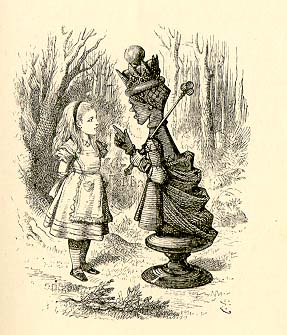This is an encore post, a repeat post from about four years ago, back in 2008. For some reason the post got a couple hundred hits one day this past week, probably from a reference at another blog that I could not track. I reread it — still true, still good stuff. In this campaign year of 2012, I am dismayed at how anti-science and the denial of reality haunts election discussions, especially on-line, but also in the newspapers and magazines, on television and radio, in diners and drugstore fountains, in churches and PTA meetings. Denial of reality may or may not be a genuine ailment to humans. When it becomes a core belief of a significant number of people, denial can cripple our nation, our states, cities and towns. We need to ask deep questions. We need to have real answers, not fantasies nor dangerous delusions.

Charles Darwin’s study, where he conducted experiments and made many of the observations he wrote about. Photo: National Endowment for the Humanities
Denying reality plagues us as an actual political response to several problems. Denialists wander so far down paths of disreality, they argue that we should ignore serious problems, and that the problems will then go away.
Should we teach the science of evolution to our children, or should we pretend fairy tales will substitute? This has deep meaning to those who understand that Charles Darwin’s greatest contribution to science probably was his strict methodology, which required observation of things in nature before writing about them as if authoritative.
Early in his life Darwin recognized that the natural world he saw, in Brazil, in the Galapagos Islands, in Australia and Tasmania, in South Africa, bore little resemblance to the world portrayed as authoritative by the great William Paley in his Natural Theology. Throughout his science career Darwin observed real things in real time. For his monograph on coral atolls, Darwin extensively observed the volcanic island phenomena throughout the South Pacific. To write about barnacles, Darwin raised them in tanks in his study. Looking at the mystery of exactly how the ivy twines, Darwin put a plant before him, and watched it, unraveling the secrets of how tendrils “knew” what to latch onto for support of the vine. To write about leaf moulds, Darwin observed worms at work, in his lab and in his gardens. To show the variation existing in what we now call the genome of a species, Darwin made extensive interviews and correspondence with animal husbanders of pigs, sheep and cattle, and he raised pigeons for generations himself, demonstrating how variations can be expressed that drive populations of one species to split into two through natural, everyday processes familiar to anyone who observed nature, and accessible by anyone who made methodical notes.
This familiarity with reality made Darwin a great scientist. The methodology proved extendable into other areas when he carefully observed the mediums to whom his brother had cast great credence. Charles revealed to Erasmus that spirit knocking on the tables at the séances did not occur so long as they held the hands of the mediums, who were then unable to feign the knocking.
Ultimately it provided some despair to Darwin, too: In the face of criticism from William Thompson, Lord Kelvin, that the Earth was not old enough to allow for evolution as Darwin suggested it must have occurred, Darwin had no answer. Lord Kelvin calculated the ages of the Earth and Sun to be no more than 200 million years. This was shown by the present temperatures and color of the Earth and the Sun, and calculated by Lord Kelvin from how long it would take the Earth, known to be composed of much iron and nickel, to cool from white hot to current temperatures. Lord Kelvin ventured deep into coal mines to measure the temperatures of the Earth deep underground, to confirm his calculations. At his death, though he defended his own observations of fossils and breeding of live animals, Darwin had no response for those arguments. Darwin thought there must be other forces at play. Only some years later did Ernest Rutherford find the secret of the Earth’s heat: Radioactive decay in the mantle and core of the planet keeps it warm. Measures of heat loss for such a large body had not accounted for continuous heating from within. A short while later astronomers and physicists discovered problems with Lord Kelvin’s calculations of the age of the Sun: The Sun is not composed of iron, cooling from white hot temperatures, but instead is hydrogen, fusing into helium, and making its own heat.
Darwin’s calculations of the age of the Earth were more accurate than Lord Kelvin’s, based on Darwin’s crude calculations of how long it might take animals and plants to have evolved from much more primitive forms. History demonstrated by easily observable things provided greater accuracy than history devised without benefit of grounding in reality.
In what other realms might grounding in reality produce answers different from what some expect, even producing better questions that many ask? Should we consider the migratory pattern changes of birds, fish and mammals, as indicators of a warming climate, over rebuttals provided by untested claims that measuring stations might not be placed correctly? Can we actually “cool” atoms with lasers, and use individual atoms to store information, no matter how counterintuitive that might sound? Can it be true that teaching people about contraception, and about sex, actually prompts teenagers (and others) to reduce sexual activity and look for love, rather than just sex? Does extending medical coverage to an entire population actually decrease total health care costs as observed in all other nations where that solution has been tried, or will it increase costs because the only way to reduce medical costs is to ration it, either with a bureaucracy, or by cutting off access by backdoor, death panel means testing (no money, no health care)? Is there any place Arthur Laffer‘s “curve” of increasing tax revenues by cutting tax rates, actually does not work — or any place it actually works? Has any society in history ever gotten rich by showering riches on the rich, and ignoring the poor, the merchants, and the working class?
In short, how does reality we know, inform us about reality yet to be? Which is the more potent predictor, observed reality, or hoped-for results to the contrary?
Our future hangs on how we answer the question, probably more than what the answer actually is.
I believe Christians, the largest faith group in the U.S., have a duty to stand for reality, and truth discovered by observation. That was the issue in 2008, too.
Here is my post of four years ago. I noticed a few of the links no longer work; I’ll replace them with working links as I can. If you find a bad link, please note it in comments; and if you have a better link, note that, too.
Several weeks ago [in 2008] I responded to a lengthy thread at Unreasonable Faith. The original post was Garry Trudeau’s “Doonesbury” cartoon of the guy in a doctor’s office, just diagnosed with an infection. The physician asks the guy if he’s a creationist, explaining that if he is, the doc will treat him with old antibiotics in honor of his belief that evolution of bacteria doesn’t occur.

Charles Darwin’s Study, Down House, where Darwin wrote all of his publications after his marriage. Photo by and copyright held by Bob Radlinski. Radlinski’s description: Darwin regularly spent about 5 hours a day here for 40 years and kept a chamber pot behind the partition so that he wouldn’t have to trek to the toilet. But he still had time for an active family life with his wife Emma and their 10 children. The low stool with casters was used to spin himself from one desk where he dissected in front of the window to another where he took notes or wrote up labels—the stool the children were allowed to use for their games, punting themselves around the living room with long poles. The sitting room at the back of the house has large windows that go to the floor so that on nice days, the children (and dogs) could roam back and forth from house to garden at will.
Point being, of course, that evolution occurs in the real world. Creationists rarely exhibit the faith of their claims when their life, or just nagging pain, is on the line. They’ll choose the evolution-based medical treatment almost every time. There are no creationists in the cancer or infectious disease wards.
At one point I responded to a comment loaded with typical creationist error. It was a long post. It covered some ground that I’ve not written about on this blog. And partly because it took some time to assemble, I’m reposting my comments here. Of course, without the Trudeau cartoon, it won’t get nearly the comments here.
I’ll add links here when I get a chance, which I lacked the time to do earlier. See my post, below the fold.



 Posted by Ed Darrell
Posted by Ed Darrell 
















